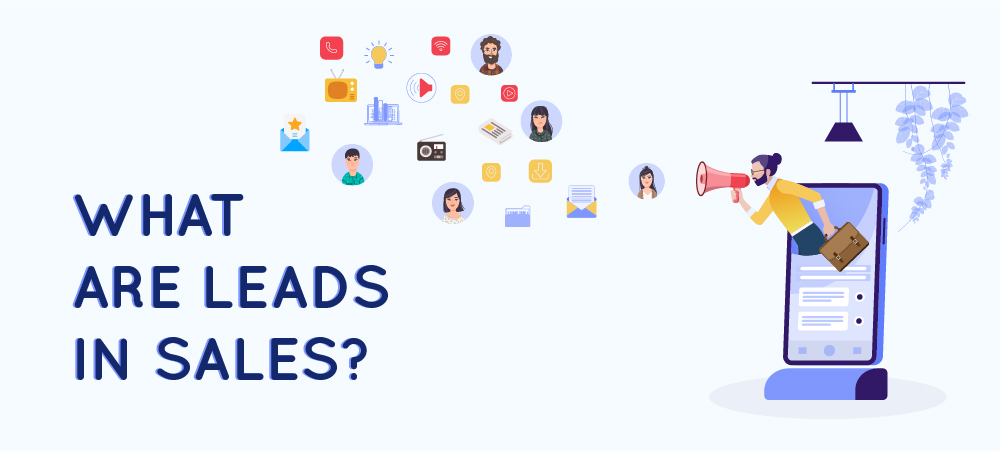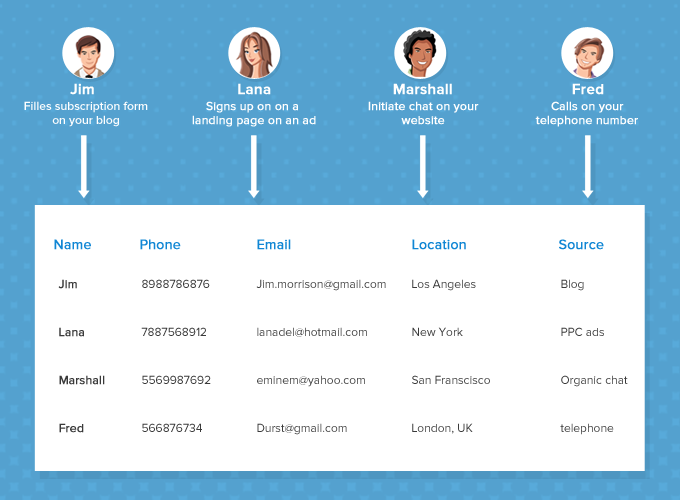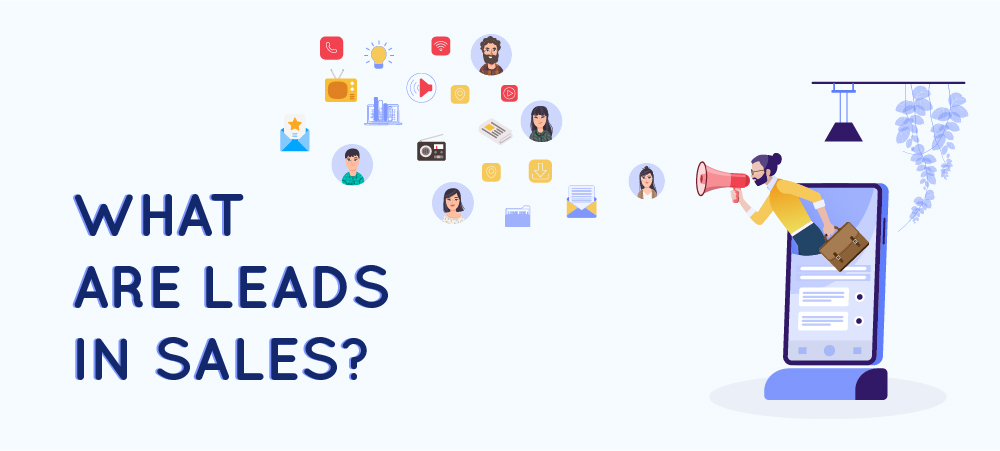Like most industries, the world of sales is filled with terms that are unique to the field. One term you will hear over and over is a sales lead or simply a lead.

Understanding exactly what are leads in sales is critical to your success as a salesperson or sales leader, especially since there are different types of leads. There’s also some confusion about sales leads versus prospects. Some salespeople mistakenly use the two interchangeably, but they actually have different definitions and functions which will affect how you approach them.
Here’s what you need to know about leads in sales so you can set your team (and yourself) up for success.
What are Leads in Sales?
In most cases, salespeople don’t sit around waiting for the phone to ring. Rather, they often need to be proactive in sourcing potential clients to sell to, and leads are the people you reach out to initiate the sales process.
By definition, leads in sales are the people or companies who might buy from you. Simply knowing the name of a company or having an email address isn’t enough to qualify as a lead. Every lead must have the following criteria in order to be considered a sales lead:
- Name of the person (ideally the decision-maker)
- Name of the company
- Contact information (i.e. email address, phone number, mailing address)
Leads are the first step in the sales cycle. Every person or company you reach out to begins as a lead, and will hopefully evolve into a prospect (more on this in the next section). Without leads, you have no one to sell to, which makes your role as a salesperson impossible.

The Difference Between Prospect vs. Lead
It’s common to hear the words prospect and lead used in the same conversation, which could be why so many people think the two are essentially the same. They’re similar, but prospects are better defined as qualified leads.
When you connect with a lead for the first time, you have no idea whether they’re interested in your product, whether it will benefit them, what problems they’re trying to solve, or if they can afford what you’re selling. In other words, these leads have not yet been qualified by you, and lead qualification should be your first objective.
In a typical sales process, you collect leads first, then follow up with each lead to gauge their interest. If you can confirm that a lead is interested, they could benefit from your product, and may potentially buy from you, the lead becomes a prospect. When this happens, you can begin to move your prospects through the sales funnel.
Leads that are not qualified may be passed over to marketing for further nurturing. It could be that a lead may buy from you eventually, but isn’t ready yet. Instead, they may need to learn more about your company, build a relationship, or get more information about your products. Marketing can help to warm up leads until they’re ready to transition into a prospect.
Where Do Sales Leads Come From?
Prospecting refers to the process of finding sales leads and turning them into viable prospects. To begin this process, both the sales and marketing departments are proactively looking for leads using a variety of sources.
Leads that come from marketing efforts usually do so through a lead magnet, such as a free download, opt-in form, Facebook ads, online course, webinar, or newsletter signup, to name a few.

Lead magnets can generate sales-qualified or marketing-qualified leads, depending on the goal. For example, someone who signed up for a newsletter is likely not ready to buy, so this lead will remain with marketing until they show signs of sales-readiness. However, someone who signed up for a webinar will likely be more sales-qualified because they are actively seeking knowledge or a solution to a problem.
Sales teams can also find leads without the help of marketing. Buying lists of leads is a common option, along with skimming industry directories, phone books, LinkedIn, online searches, or even in-person networking events. To find quality leads, sales teams usually focus their lead gen efforts on highly targeted markets. For example, if your target audience is marketing directors, then you might do a search on LinkedIn for people with that job title.
Regardless of how you find your leads, it’s essential to use a lead tracking system that will help you manage communications and progress with each lead. If you’re sending LinkedIn messages or chatting with people at events, you need to collect enough information about them to add to your CRM or whatever system you’re using. This takes much of the manual labor out of the equation and helps prevent details from slipping through the cracks.
How to Turn Leads into Prospects
Collecting sales leads is the first step. Your next objective is to turn your leads into qualified prospects. Trying to sell to a lead without first doing this step will result in a major waste of time and resources and prevents you from focusing on your best opportunities.
Start thinking about the criteria that a prospect should have before you try to sell to them. You want to see if they are a good candidate for what you offer AND has the money and ability to buy from you. If you can qualify them on these criteria, then you know you have a good chance of closing the deal.
Tools like LeadSquared can automate the majority of this process. With features like lead generation, lead scoring, and lead qualification, sales reps can know at a glance where their best chances are without having to guess at the next steps.
Try LeadSquared free for 15 days to experience a better way to collect and manage sales leads!










